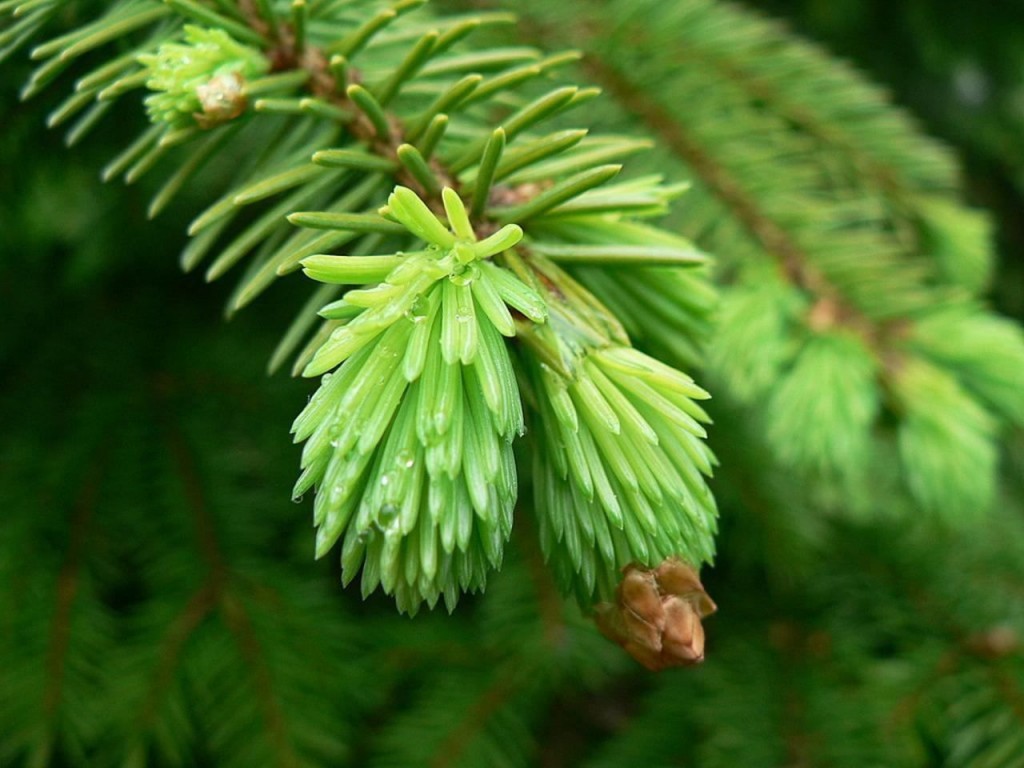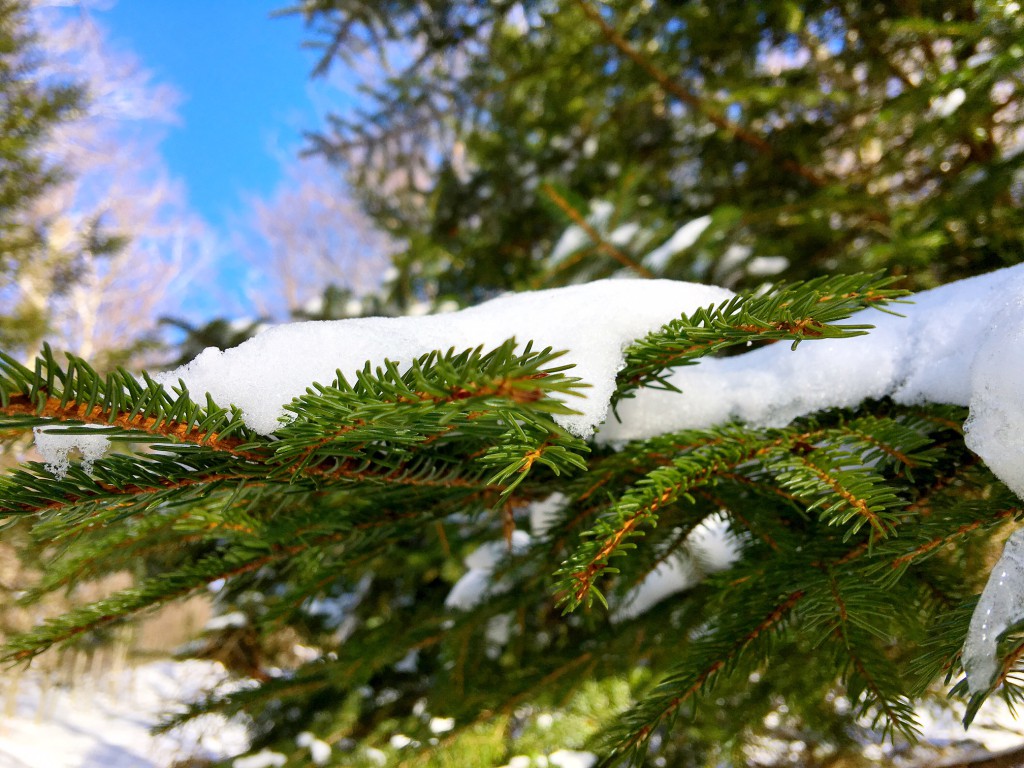Hi! Maureen here, from Cheat Mountain. This is a back issue of SurThrival Thursdays from 1/14/16:
Hey Folks, it’s SurThrival Thursday! SurThrival is a new word that we came up with a few years ago to describe the skills that we teach here on Cheat Mountain. Our goal isn’t just to teach survival, but to impart on our students the ability to thrive in all wilderness situations.
Today I wanted to focus on a wild food that is plentiful here in the early summer: spruce tips. By spruce tips, I refer to the new growth of spruce branches each year that presents on the tip of the previous year’s branch. These bright green beauties usually appear in May or June. They are distinguishable from the previous year’s growth by their lighter color and softer texture. This food can be eaten raw or cooked, added to a meal or made into tea. It is one of the rare wild foods that has a strong citrusy flavor and contains heaps of vitamin C. This is the sort of food that can make your wild meal taste exciting, and take you one step further from surviving toward thriving.
Traditionally, trees in the pine family have been used all over the world medicinally. In addition to vitamin C, parts of these trees contain vitamin A and various flavonoids and volatile oils that are known to be beneficial for respiratory conditions, colds, flus, and inflammation. While not as tender or palatable, mature spruce needles are also just as nutritious. They provide an easily available source of sustenance year round, when other foods are scarce. Spruce needles are therefore, a marvelous ingredient to have in any wilderness kitchen.
This food can also be eaten from the comfort of your own home! Spruce tips make an excellent addition to any nutritious smoothie. They also easily garnish meat or vegetables, or act in their own right as a vegetable when steamed until tender. Perhaps you don’t have Spruce tips available to you, in that case other trees in the pine family can be substituted. For safety’s sake, I stick to Spruce, Fir, Pine, and Eastern Hemlock tips (not to be confused with the Hemlock plants). Each has their own unique citrusy flavor to add to your meal! Remember, when you try a new wild food, be positive in your identification and try a only small amount first and see how your body feels about it.
That’s all from Cheat Mountain this week, stay connected to us through SurThrival Thursday posts, and start getting excited about Cheat Mountain classes!



Comments are closed.